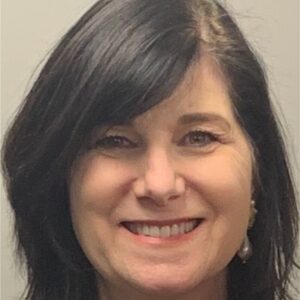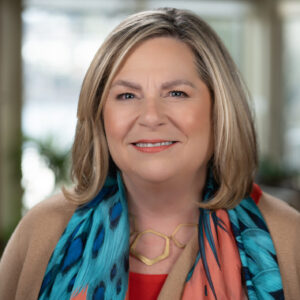Accountable accounting
Beautiful facilities, cutting-edge programming and superb service may be what attracts residents to a long-term care community, but at the end of the day, it’s the small details, such as a lost invoice or late vendor payment that can make or break an operation–and ruin business partnerships along the way.
“In healthcare, we are always looking for ways to create cost reduction, but there is not a lot of fluff that can be cut out,” said Michael Hoskins, chief financial officer of OnPointe, a family of companies offering post-hospital services in communities in New Mexico and Texas.
OnPointe was recently created through a merger of two companies looking to grow through the country’s expanding need for transitional care. Hoskins had a strong business strategy and his partner’s business offered experience in building superior facilities. However, even after the merger of these two vital components, it came down to the nitty-gritty details, such as what type of accounts payable system the new business would need to implement to help it survive in this competitive industry.
“It’s not just about paying vendors in a timely manner, or making sure someone accurately sees the invoice for approval, but it’s ultimately about the cost of shuffling tons of paper, hunting down lost invoices and mailing those invoices to the main office to be paid,” he said.
In other words, according to Hoskins, the business of accounts payable creates an environment that can breed error and lost revenue. Something long-term care communities can’t afford to risk.
Three different AP models
There are three options currently available to long-term care providers. Each serves a unique purpose depending on a company’s size, current locations and future growth plans. A company’s infrastructure and willingness to embrace new technologies also play a key role in the type of system being considered.
Most long-term care providers will choose one of three options which include a system that is installed on-site, a service that is outsourced to a third party, or one that is virtual, or cloud-based. Perhaps the two most popular options today are on-site systems or cloud-based, according to Doron Gutkind, chief software architect with LINTECH Software. Both options provide their own benefits and risks which need to be weighed according to each community’s needs.
“I like to compare the cloud-based system to a person logging into their own personal bank account online,” Gutkind said. “Communities that go cloud-based don’t have to worry about the computer on which the software runs and it provides access from any location. But for communities that prefer an on-site system, the benefit is knowing that no one else has access to their information.”
The cloud concept has been used in the health care industry for three decades although under different names such as “hosting” or “application service provider.” Cloud allows a community to have its own accounts payable system while knowing someone else is caring for the technology’s upkeep. Communities that opt for an on-site system make a purchase and are responsible for the system’s ongoing care. The difference can be likened to renting a home versus buying it, Gutkind said.
About 70 percent of LINTECH’s customers have on-site systems and the other 30 percent have chosen the cloud. The long-term care industry has been slow to adopt the cloud concept in that many communities operate their accounts payable within a larger system that also includes their electronic health records.
Scott Garner, vice president of operations at SOS Corp., said his company’s on-site accounts payable system gives long-term care communities better control of their processes, and the ability to record invoices and generate payments directly from a completely integrated system.
Placing patient information in a virtual world adds a perceived risk that it could be seen or stolen by outside users. However, most cloud providers are HIPAA compliant and have taken steps to ensure against such risks, said Matt Williams, chief executive officer of Yooz North America.
Simply accounts payable
Yooz is a cloud-concept product that can work much like an app that can be added to a larger system already in place at a long-term care company. This is the route that Hoskins chose when he and his partners created OnPointe. They already had a cloud-based accounting system in place and were looking for a provider that would make paying the bills a little more efficient.
“We have always embraced the cloud-based technology wave,” Hoskins said. “My business partner is in New Mexico and I am here in Texas. We are always looking for that solution that would allow us to make a decision as quick as possible whether we are down the hall or 1,000 miles away. When we came across Yooz, we were really excited.”
Yooz has enabled OnPointe to become much more efficient with its accounts payable, but not just because it is cloud-based. The system offers one of the industry’s most accurate image capturing capabilities. A receptionist at a long-term care facility can now open an invoice and feed it through a scanner. The scanner captures key images such as dollar amounts and vendor name and then routes the image to the appropriate person for approval.
“The manager can be in Singapore and receive the image on their iPhone and can hit approve so it is routed back to the main office where it is paid either through electronic transfer, check or virtual rebate,” Williams said. “The whole end-to-end process is automated.”
A system like this provides an advantage for long-term care communities that fight the challenge of being decentralized across multiple markets. A community that has a system like Yooz in place can literally grow 100 percent overnight as long as a scanner is placed in each new location that opens, Williams said. OnPointe will reap that advantage when it nearly doubles in size over the next year. Perhaps even better is that a company can cut its cycle time down from 18 days to four. The result means companies can take advantage of early payment discounts offered by vendors and avoid penalties for late payments.
Ahead of the curve
“(Long-term care providers) are looking for embedded workflows and tools to save time, improve billing accuracy and shorten their reimbursement cycle,” said Bill McQuaide, chief product officer at PointClickCare. “Detailed reporting is also a must, as is the capability to do batch processing of transactions.”
Moreover, understanding the challenges long-term care communities face has to be a top priority for companies offering solutions to the industry. PointClickCare, a company offering a cloud-based software program, devotes more than one million hours each year to research and development to stay ahead of the industry’s ever-changing demands and tightening regulations, McQuaide said.
“The senior care industry is the second-most regulated industry in North America,” he said. “It’s also an industry undergoing a period of transition with an aging population and increasing acuity levels driving the need for technology innovation to help senior care providers cope with these changes.”
Systems that safeguard
Systems need to enable communities to adapt to changes, but also avoid unforeseen pitfalls. Internal fraud is one high-cost risk that communities can help avoid when they shift from manually processing invoices and paying checks by hand to a systematic approach.
LINTECH’s Gutkind said most accounts payable systems are part of a community’s larger materials management process, which helps track purchase orders to budgets to goods received and invoices paid. Creating a solid link between all of these processes helps alert administration if numbers aren’t matching up with reality or historical use of products. Stories abound about nursing homes that have lost hundreds of thousands of dollars through employee fraud. Many cases reportedly could have been avoided if strong inventory control systems were in place to signal discrepancies.
“I have had more than one discussion over the years with people inside long-term care organizations who started suspecting something and realized that someone in the kitchen was stealing tuna cans or toilet paper rolls,” Gutkind said. “At the end of the day, some of the things that long-term care providers purchase are big items that no one would find use for at home, but they also purchase other everyday items like food that people are tempted to take home with them.”
I Advance Senior Care is the industry-leading source for practical, in-depth, business-building, and resident care information for owners, executives, administrators, and directors of nursing at assisted living communities, skilled nursing facilities, post-acute facilities, and continuing care retirement communities. The I Advance Senior Care editorial team and industry experts provide market analysis, strategic direction, policy commentary, clinical best-practices, business management, and technology breakthroughs.
I Advance Senior Care is part of the Institute for the Advancement of Senior Care and published by Plain-English Health Care.
Related Articles
Topics: Articles , Executive Leadership , Facility management , Finance











